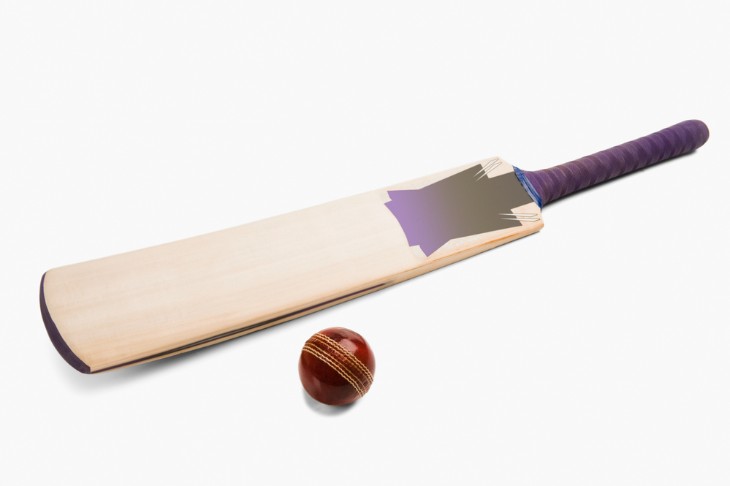- Duration of Lunch in Test Cricket
- Lunch Timing Variations in One-Day Internationals
- Lunch Breaks in Twenty20 Cricket
- Impact of Lunch Duration on Players' Performance
- Lunch Breaks in Domestic and County Cricket
- International Variations in Cricket Lunch Times
- Cultural Significance of the Lunch Break in Cricket
- Evolution of Lunch Duration in Cricket Over Time
- Comparison with Other Sports: Lunch Breaks
- Conclusion
The tradition of lunch breaks in cricket dates back to the early days of the sport. Historically, cricket was not only a game but also a social event, where breaks for meals were integral. In the 18th and 19th centuries, cricket matches often included long intervals for lunch, allowing players and spectators alike to socialise and enjoy meals. These breaks were not merely for sustenance, but also offered a chance to discuss strategies and relax. The length and nature of these breaks have evolved over the years, influenced by changes in the rules of the game and the professionalisation of the sport.
Interestingly, the duration and timing of the lunch break varied greatly in the early years of cricket. Depending on the level of play and the region, lunch breaks could last anywhere from 20 minutes to over an hour. The concept of a formalised lunch break emerged as cricket became more structured, with regulations gradually standardising how long is lunch in cricket. As the game transitioned into a more competitive and professional sport, the duration of these breaks became more consistent, reflecting the need for a balance between leisure and the seriousness of the game.
Duration of Lunch in Test Cricket
In Test cricket, the format considered the game's highest standard, the lunch break has a defined duration. Typically, the lunch interval in Test matches lasts for 40 minutes. This break usually occurs after the first session of play, marking a significant pause in the day's proceedings. The timing of the lunch break can vary slightly depending on the start of the match and any interruptions that may have occurred, such as delays due to weather. However, the 40-minute duration remains a consistent feature across Test matches worldwide.
The role of the lunch break in Test cricket goes beyond a mere pause for food. It provides players with an essential period of rest and recuperation. During this time, players not only eat but also strategise for the upcoming sessions. Coaches and team members often use this interval to discuss tactics and assess the state of the game. The lunch break thus plays a crucial role in the rhythm and strategy of Test cricket, offering teams a brief respite to regroup and plan their approach for the remainder of the day's play.
Lunch Timing Variations in One-Day Internationals
One-Day Internationals (ODIs), a shorter format of cricket, exhibit distinct characteristics in their lunch break timings. Unlike the longer Test matches, ODIs are limited to 50 overs per side and typically completed within a day. The lunch break in ODIs, often referred to as the 'innings break', occurs between the two innings and lasts approximately 30 to 40 minutes. This break's duration is subject to the match's start time and any interruptions that might occur during the game, such as delays due to rain.
The innings break in ODIs serves multiple purposes. Primarily, it allows the teams to switch roles from batting to fielding, or vice versa, and provides players a necessary rest and meal break. This period is also crucial for ground staff to perform maintenance on the pitch and outfield. Additionally, it offers broadcasters and spectators a scheduled interlude, enabling them to engage in ancillary activities related to the match, such as analysis, entertainment, and refreshments.

Lunch Breaks in Twenty20 Cricket
The Twenty20 (T20) format, known for its fast pace and short duration, approaches the concept of lunch breaks differently. In T20 cricket, typically, there is no formal lunch break due to the condensed nature of the game, which is designed to be completed in about three hours. Instead, a brief interval, lasting about 10 to 15 minutes, is allotted between the two innings. This break is significantly shorter than those in Test matches and ODIs, reflecting the rapid and continuous flow of the T20 format.
This brief intermission in T20 matches, while short, is essential for the transition between innings. It allows players a quick rest and strategy session, and the ground staff time to prepare the pitch for the next innings. Given the high intensity and fast pace of T20 cricket, this interval is crucial for maintaining the momentum of the game while providing a necessary respite for players and officials. The absence of a longer lunch break in T20 cricket underscores the format's focus on speed and continuous action, appealing to a different audience segment than traditional Test matches or ODIs.
Impact of Lunch Duration on Players' Performance
The duration of lunch breaks in cricket, notably in longer formats like Test matches, can significantly influence players' performance. A well-timed and appropriately lengthy lunch interval allows players to recover physically and mentally from the demands of the session. During lunch, players not only replenish their energy with food but also engage in tactical discussions and mental relaxation. This break is crucial for players to assess their performance in the previous session and prepare for the challenges of the upcoming one.
Moreover, the length of the lunch break can impact players' concentration and stamina. A break that is too short may not provide sufficient time for players to rest and refuel, potentially leading to decreased performance in the post-lunch session. Conversely, a very long break could disrupt the players' rhythm and focus. Balancing how long is lunch in cricket is thus essential to maintain optimal player performance and ensure the game's flow is not adversely affected.
Lunch Breaks in Domestic and County Cricket
In domestic and county cricket, the structure of lunch breaks can vary more than in international formats. Typically, these matches follow a pattern similar to Test cricket, with a 40-minute lunch break. However, the exact timing and duration can be more flexible, often influenced by local conditions and traditions. This flexibility allows domestic leagues to tailor the game to their specific needs and preferences, which can differ from the international standards.
Domestic cricket's approach to lunch breaks often reflects the level of professionalism and the balance between cricket as a sport and a social event. In some regional or club-level matches, lunch intervals might be longer, providing a more relaxed atmosphere and fostering community engagement. In contrast, more competitive domestic leagues may adhere closely to international standards, keeping lunch breaks concise and focused. This variation in lunch durations at the domestic level illustrates the sport's adaptability and its ability to cater to different audiences and cricketing cultures.
International Variations in Cricket Lunch Times
Cricket, played internationally, exhibits diverse practices regarding lunch break durations. While international matches like Tests and ODIs generally follow standard timings, there are subtle variations influenced by local conditions and traditions. For instance, in countries where matches start later due to weather or cultural preferences, lunch breaks may be adjusted accordingly. These adjustments ensure that play resumes under optimal conditions, considering factors like light and temperature.
Furthermore, in some multi-day international tournaments, organisers might modify lunch timings to accommodate a packed schedule or to align with broadcast requirements. These changes, while minor, highlight the sport's adaptability and the importance of catering to a global audience. Despite these variations, the fundamental purpose of the lunch break remains the same: to provide players and officials with a necessary respite and maintain the quality and integrity of the game.
Cultural Significance of the Lunch Break in Cricket
The lunch break in cricket holds cultural significance, particularly in countries where cricket is more than just a sport. In nations like England, Australia, India, and the West Indies, the lunch interval is often an opportunity for social interaction among spectators and a celebration of cricketing traditions. In England, for example, the lunch break during Test matches is a time-honoured tradition, often featuring classic British foods and providing a sense of continuity with the sport's history.
Additionally, in some countries, the lunch break becomes an opportunity to showcase local cuisine and hospitality, adding to the match's cultural experience. This aspect of cricket demonstrates the sport's ability to blend athletic competition with social and cultural elements, making it unique compared to other sports. The lunch interval, thus, is not just a functional necessity but a vital part of the cricketing tradition, enriching the experience for players and spectators alike.

Evolution of Lunch Duration in Cricket Over Time
The duration of lunch breaks in cricket has evolved significantly over the years. In the early days of the sport, lunch intervals were lengthy and leisurely, reflecting cricket's social aspects. As the sport became more competitive and professionalised, the need for more structured and consistent break times became apparent. This evolution led to the standardisation of lunch durations, particularly in international formats like Test and One-Day matches.
This standardisation process has been influenced by factors such as television broadcasting needs, audience expectations, and the physical demands on players. The modern game balances these various needs while maintaining the tradition of the lunch break. The evolution of lunch durations in cricket illustrates how the sport has adapted to changing times while preserving its unique character and traditions. This adaptability has been key to cricket's enduring popularity and its status as a globally respected sport.
Comparison with Other Sports: Lunch Breaks
The concept of lunch breaks in cricket presents a unique aspect when compared with other sports. In many team sports, such as football or basketball, there are no extended breaks for meals during the game. These sports typically have shorter match durations and include brief half-time intervals primarily for rest and tactical discussions, not for meals. The lunch break in cricket, especially in longer formats like Test matches, reflects the sport's distinct pace and cultural heritage.
This contrast highlights the uniqueness of cricket in balancing athletic endeavour with social and leisurely elements. While sports like football are continuous and high-paced, cricket, particularly in its longer formats, allows for a more relaxed and strategic experience. The lunch interval in cricket is an integral part of this experience, providing a moment of respite and reflection, which is rare in the fast-paced world of professional sports.
Conclusion
In conclusion, the duration and significance of lunch breaks in cricket vary across different formats and levels of the game. From the leisurely intervals of early cricket matches to the more structured breaks in modern international cricket, lunch breaks have always been an integral part of the sport. They offer not just a physical respite for the players but also a time for strategic planning and social interaction. The evolution and variation of lunch breaks in cricket mirror the sport's adaptability and its unique blend of competition, tradition, and culture.
For more information:


